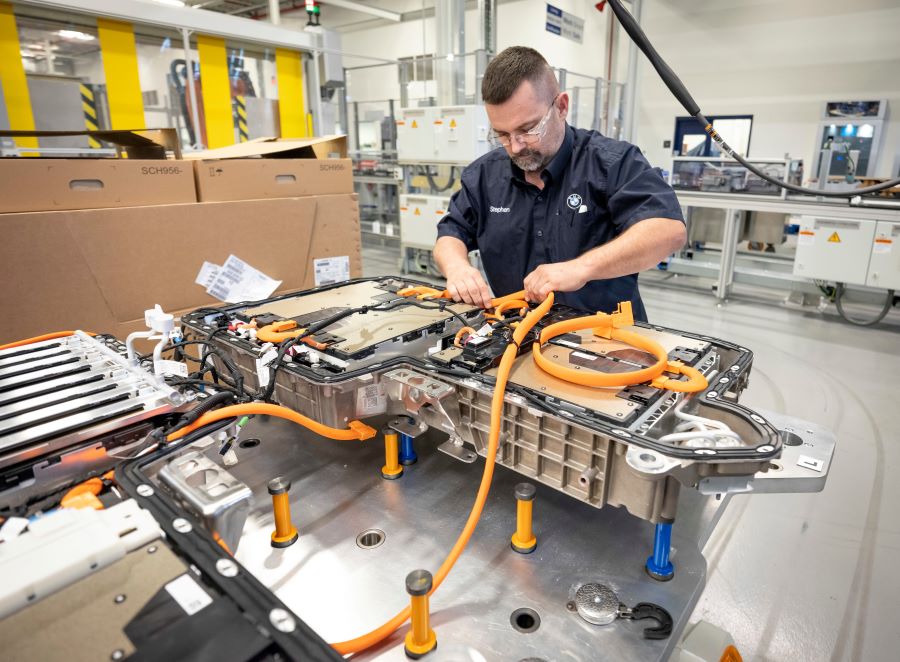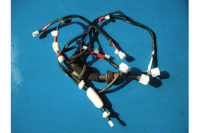Because of growing interest in electric vehicles, robust standards will be needed to address high-voltage cables and wiring harnesses. As one of the leading standards development organizations in the electronics industry, IPC International Inc. is at the forefront of developing best practices for automotive architectures through a collaboration with volunteers.
The organization is currently working with industry veteran Constantino “Tino” Gonzalez to develop IPC-9791: Electric Mobility Cable and Interconnects—Visual Acceptability and Process Requirements, a new standard for electric vehicle wiring harnesses, cables and interconnects.
Gonzalez, president of ACME Corp., a consulting firm that specializes in management and process improvement, serves as project manager and co-chairman of the IPC High Voltage Electric Mobility Committee along with Benoit “Ben” Dagenais, lead technician at the Innovative Vehicle Institute.
Gonzalez and Dagenais recently did a presentation on IPC-9791 during the Virtual Battery Show. Autonomous & Electric Mobility by ASSEMBLY caught up with Gonzalez beforehand and asked him to explain why this new standard is important to all engineers working on electric vehicle applications.
AEM: What is the biggest challenge that EV engineers face today with next-generation electrical systems?
Gonzalez: One of the biggest challenges that we face today with electric cars is batteries. Everyone wants to know how far you can go without recharging. Aside from the charging infrastructure itself, there are issues relating to connectors and overheating when rapidly charging batteries. And, there are numerous issue related to safety when working around high-powered batteries and large cables.
AEM: Specifically, what is the biggest challenge when it comes to high-voltage cables?
Gonzalez: With high-voltage cables, connections must be properly made to avoid leakage. Because the cables are quite thick, tooling is important. For instance, crimping is a much different beast now. Traditionally, many wiring harnesses fail due to crimping mistakes and this trend will probably continue with electric vehicles.
AEM: What new types of interconnect systems are required to spur further development of electric vehicles?
Gonzalez: Larger connectors are needed. One critical thing that we will address with the IPC-9791 standard is connectors. We’ve had meetings with OEMs and suppliers to address the issues related to cooling and integrated assembly. One issue involves disconnecting components to do service; you have to wait for the cables to drain to a safe voltage.
AEM: What is the biggest challenge when it comes to EV wiring harnesses?
Gonzalez: Rework and repair will be cost-prohibitive. To address material issues, process control and better design will become more important.
AEM: Why is there a vital need for newer, more robust EV cable and electrical interconnection standards?
Gonzalez: Some industry standards have already been issued, such as IEC-62196 and SAE J1772. However, there is nothing available today that you can give to an operator and say “this is what you need to do” or “this is the way that the routing is supposed to look like.” IPC-7971 will explain all of the process requirements for assembling high-voltage components. It will explain what is “acceptable” and what is considered to be “bad” or “defective.”
AEM: How is IPC-9791 addressing this need?
Gonzalez: The goal of IPC-9791 is to create a high-voltage wiring harness and cable standard to improve the field reliability of e-mobility and the reliability of manufacturing. The scope of the standard includes topics such as energy storage, powertrain, DC-to-DC converters, DC charging, HVAC and battery thermal management. Each section will address issues such as design for manufacturing, assembly and testing, plus material components and equipment requirements. In addition to cars, we will be covering buses, motorcycles, tractors, trucks and other types of electric vehicles.
AEM: When will IPC-9791 be available?
Gonzalez: We hope to have something ready by 2023. However, developing standards requires face-to-face meetings, so we’ve been hampered by recent COVID-19 travel restrictions. Our initial meeting took place in summer 2019 in Raleigh, NC. Our official kickoff meeting was in Quebec, Canada, in October 2019. We had input from every part of the electric mobility industry. While in Canada, we visited a wire harness assembly shop and a bus assembly plant to gather input. As part of this hands-on process, we had a chance to see various production processes and sit down with engineers to hear their views. We also had a roundtable discussion with several wiring harness manufacturers in Juarez, Mexico. Another meeting took place at the 2019 Productronica trade show in Germany to gather input from European companies.
AEM: Can you provide an overview and outline of what IPC-9791 will cover? What are some of the highlights of this important new standard?
Gonzalez: The heart of IPC-9791 is Section 5, which deals with the energy storage system—the battery and battery pack. We started by defining the main section of the standard, which is visual criteria, requirements. We are also looking at process indicators and requirements, such as how to assemble and manufacture various components, including single-cell units, multicell subassemblies, modules and battery packs. Topics include components, physical damage, connections, installation requirements and cleanliness.
Welding processes covered will include laser, micro-tag, spot and ultrasonic equipment needs. Various photos will provide proper visual criteria showing correct assembly techniques.
We will address things that engineers and operators need to know and follow to produce a product that will comply with customer requirements. All connections and components, such as bus bars, high-voltage power cables, low-voltage control cables, printed circuit boards and battery management systems, will be covered.
Battery pack assembly topics include heating and cooling requirements, high-voltage contacts, manual service disconnects, enclosures, safety and personal protection equipment (PPE). Battery cells covered will include cylindrical, pouch and prismatic.
Design for manufacturing, assembly and testing will include things such as precharge contactors, precharge feedback, clearance between equipment and enclosure, cell voltage match inside each module during assembly, cables used inside the battery pack, aluminum and copper bus bar thickness and insulation.
Another key part of the document will cover safety and security, with things such as gloves and other PPE, grounding and fire prevention.
We are also incorporating some content from the existing IPC/WHMA-A-620 standard. Material that will be incorporated into IPC-9791 will include Section 4 (mechanical terminations), Section 5 (crimp terminations), Section 7 (ultrasonic welding), Section 8 (splices), Section 9 (connectorization), Section 11 (measuring cable), Section 14 (securing cable), Section 15 (shielding), Section 17 (finished assembly installation, such as clamping and grounding) and Section 19 (mechanical test methods).
The rest of IPC-9791 will cover the following topics:
Section 6—electric power train issues, such as materials (coolants), components (vibration dampers and hardware) and equipment (insulated tools and PPE).
Section 7—DC to DC converters, including air- and water-cooled devices. In addition to addressing design for manufacturing, assembly and testing, this section will cover function or process requirements, visual acceptability criteria, safety and handling requirements at the assembly level.
Section 8— onboard chargers.
Section 9— DC charging systems.
Section 10—cabin HVAC systems.
Section 11—battery thermal management systems, including cooling and heating controls to maintain optimal temperature of the battery during operation.
Section 12—power distribution system enclosures.
Section 13—high-voltage harnesses.
Section 14—auxiliary systems such as lights, pumps, sensors, steering and ventilation.
Section 15—electric vehicle supply equipment.
Section 16—summary of testing requirements.
Section 17—repair and rework requirements and guidelines relating to things such as damaged cable and engineering change orders.




